The clamshell laptop is finally joining the beige desktop in the museum of computer artifacts. The basic hinged design made its first appearance in a device called the Grid Compass way back in 1982, so no one can scoff at the clamshell’s longevity. Nonetheless, times are finally changing, which means it’s time for the pure clamshell laptop to ride off into the sunset.
The traditional clamshell is being replaced by a wide variety of designs that merge tablets and laptops into a single physical package. These Windows 8 hybrid devices should directly appeal to PC users who might otherwise buy thin-and-light laptops. First-generation hybrids are already shipping, and most of them are flawed in some way, but they nonetheless bring new use-case scenarios to a mobile computing paradigm that hasn’t changed much in 30 years.
Sure, there have been attempts to upend the clamshell. Take Microsoft’s Tablet PC initiative during the Windows XP era. But those early efforts were hobbled by bolting touch control onto an operating system that was poorly suited for touch interfaces. Windows 8 and Windows RT, however, are designed from the ground up for the touch experience.
Now that we’ve reviewed a good number of Windows 8 portables, it’s time to step back, name the best models, and put them all in context. Given their intrinsic design compromises, none of them is a clear winner as a do-it-all system. But we can still look at five innovative designs, walk you through why you’d want one, and suggest which usage models may best apply to you.
Primarily a PC: IdeaPad Yoga
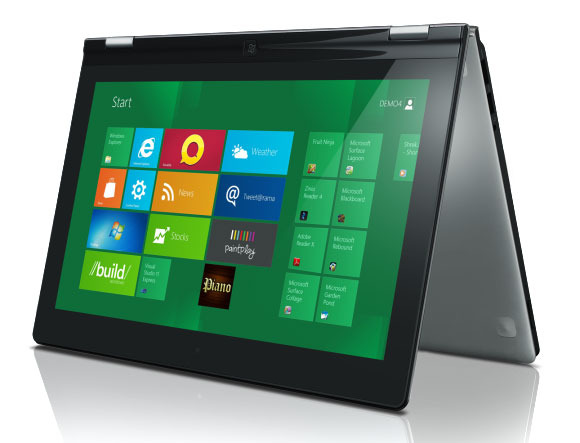
Sometimes you really need a full laptop keyboard, but you’d like to couple it with a Windows 8 touch experience. And, occasionally, you may need to use your system as a pure tablet—but you don’t anticipate that being the machine’s primary use. If any of this resonates with your personal needs, consider Lenovo’s IdeaPad Yoga. It’s an excellent 13.3-inch Ultrabook that includes a multitouch, capacitive touchscreen for all the cool new gestures built into Windows 8.
The Yoga has what it takes to be a solid ultraportable laptop. The keyboard is excellent for touch typists. The battery life approaches 6 hours. The sound quality of the speakers is surprisingly good. And it weighs less than 3.5 pounds.
However, it’s the display that really sets the Yoga apart. It’s a full 1600 by 900 pixels, offering a good balance in pixel density between 1366 by 768 and 1080p (or 1920 by 1080, by any other name). The panel rotates 180 degrees, allowing the Yoga to be used as a full tablet (albeit with its keyboard exposed) or in the “tent mode,” where you can use it to give presentations or easily share content.
The business traveler’s hybrid: ThinkPad Twist
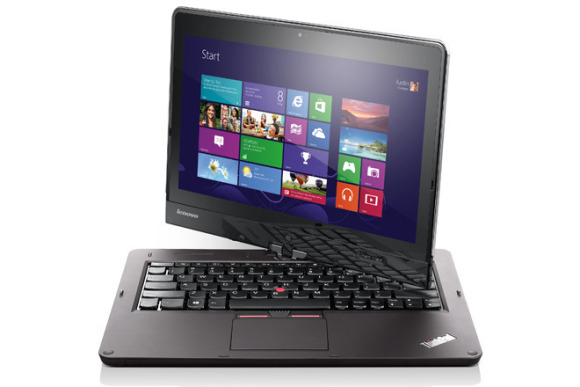
Road warriors need work machines that are lightweight, rugged and reliable. Lenovo has long promised these qualities in the ThinkPad, a laptop line that was first conceived by IBM in 1992, and has been targeted at business users ever since. And now we have the ThinkPad Twist, which brings Windows 8 touch gestures and a clever hybrid design to a laptop legacy that’s always been a bit buttoned-up and stodgy.
As with most ThinkPads, the Twist is a tad heavier than a consumer-grade laptop. And at 3.5 pounds, the Twist—even with its 12.5-inch, 1366 by 768 display—is a bit heavier than Lenovo’s IdeaPad Yoga, which has a larger, higher-resolution screen. But what’s nifty about the Twist’s display is its hinge design, which lets this hybrid engage a tablet mode while still keeping the machine’s keyboard protected. This makes the Twist more robust in tablet mode than the Yoga, whose keyboard remains exposed.
The base-model Twist ships with a 500GB hard drive and a 24GB caching SSD. Working together, the two drives deliver speedy startup times and copius storage. Lenovo does offer one model with a traditional SSD intended for storage, but it’s a fairly scant 128GB. This SSD option, however small, will likely play well in larger businesses, where IT departments tend to lock down which applications can be installed.
Overall, the Twist brings the ruggedness of the ThinkPad line with some of the most usable features of Windows 8 tablets. The only significant omission is a 3G/4G mobile broadband option, which would make the Twist a more attractive hybrid for frequent travelers. Nevertheless, the Lenovo Twist is compact and reasonably light, which should allow it to travel well.
Almost a tablet: Sony Duo 11
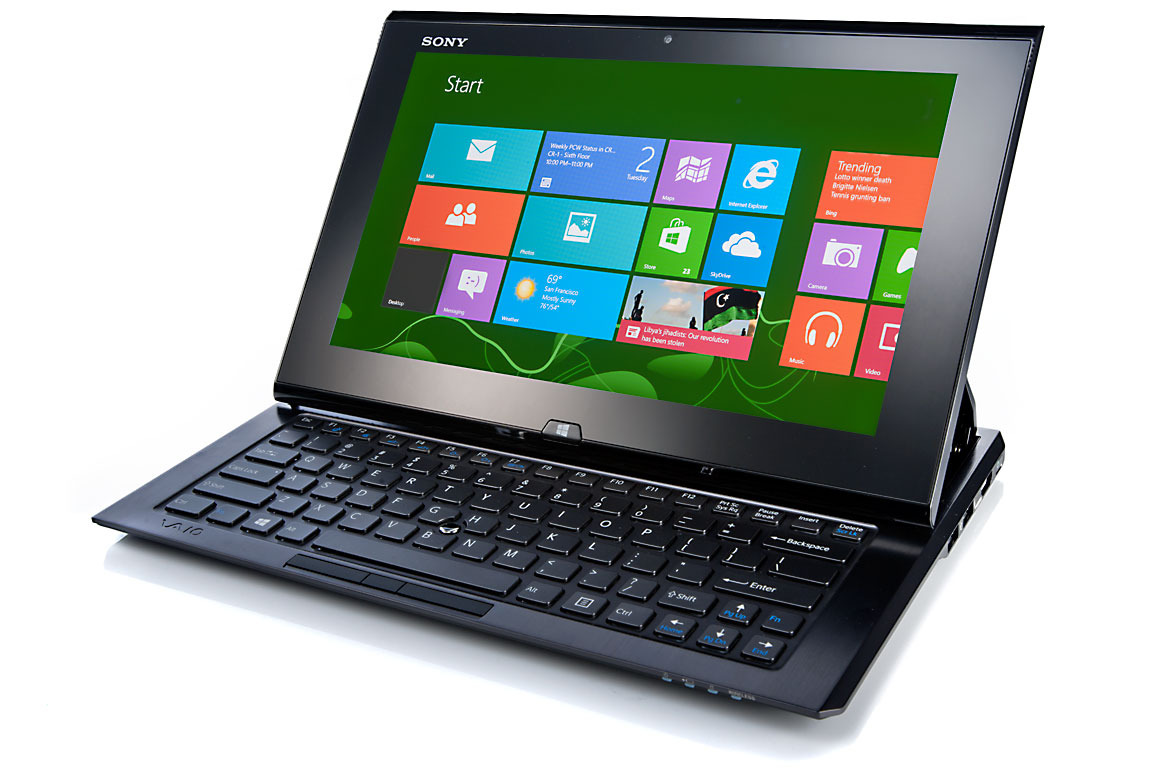
The Sony Duo 11 looks like a tablet—most of the time. When you carry it around in its folded state, a seam conceals a sliding keyboard hidden underneath the bottom of the display. It’s the laptop version of those old-school slider phones, complete with a compact, Chiclet-style keyboard.
Make no mistake: Touch typists will not like the keyboard on the Duo 11. Really, the most postiive thing I can say about the keyboard is that it’s functional, offers tactile feedback, and is a little easier to use than an on-screen keyboard. For the most part, however, the keyboard is cramped and uncomfortable. Luckily, the sliding hinge seems durable enough. And given that that the Duo 11 will likely be used more in tablet mode than laptop mode, the slider bit works pretty well.
The entire affair weighs 2 pounds, 13 ounces—under 3 pounds, in other words. The 11.6-inch screen is an IPS display offering full HD (1080p) resolution. Sony also includes an N-trig stylus that supports 256 pressure levels, making it a useful adjunct for artistically inclined users. If what you need is a tablet for touch-sensitive art applications, the Duo 11 bears closer scrutiny.
PC performance in a tablet design: Acer Iconia W700
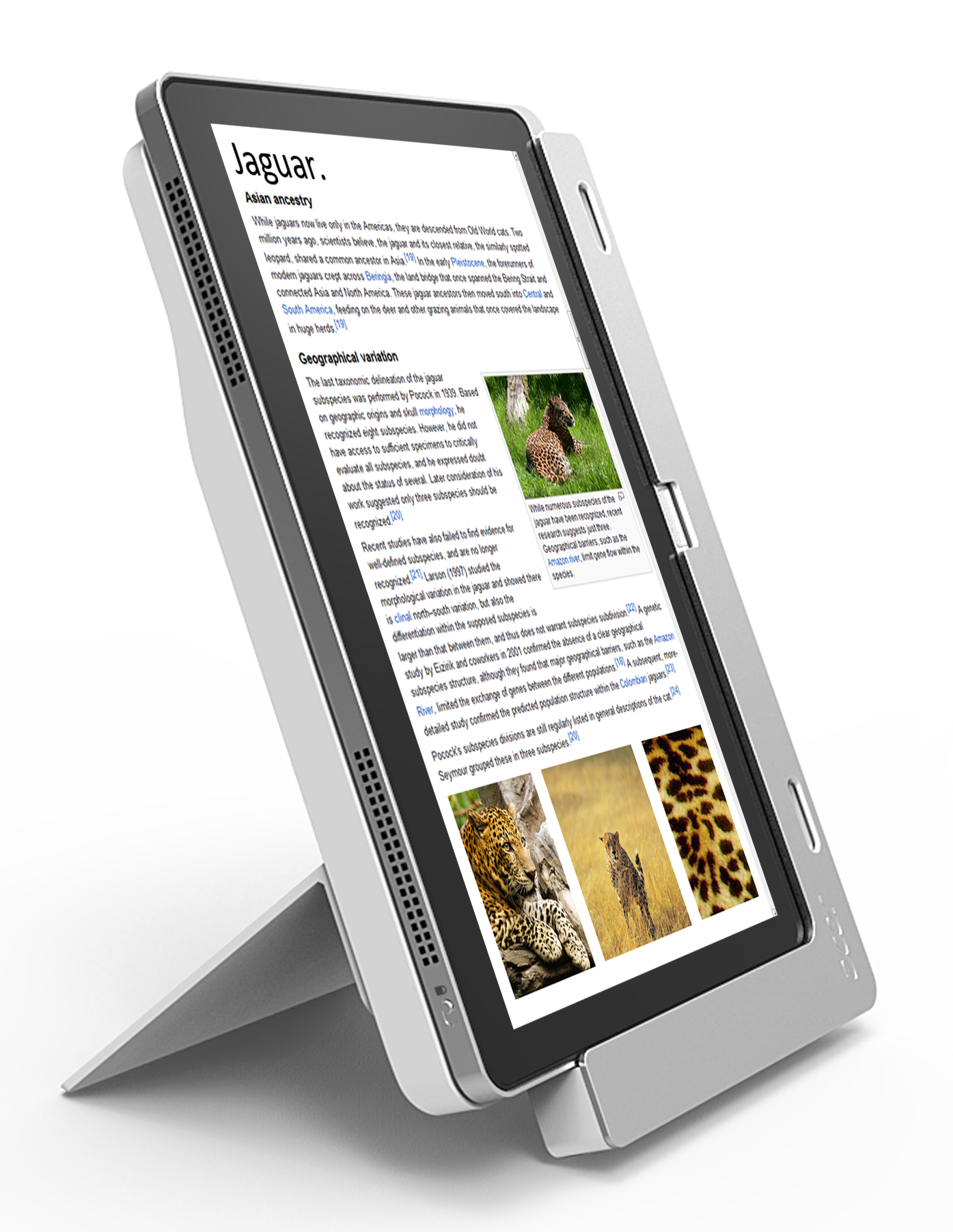
In the Iconia W700, Acer crams an Ultrabook into a relatively thin tablet. No one will mistake this device for an iPad or Microsoft’s Surface RT, but in weight and thickness, it’s pretty close to what Microsoft’s Surface Pro will be. It’s also 2.1 pounds; while that’s significantly lighter than the Sony Duo 11, it still means that lugging it around propped on your forearm (as many tablet users do) may get tiring.
The tradeoff for the weight is robust, PC-like performance and features, including USB 3.0 and mini-HDMI video output. As with most tablets, it’s got both forward-facing and rear-facing cameras.
As with Sony’s Duo 11, the Iconia includes a full HD, 1920-by-1080 display. This delivers gorgeous-looking images and text, but it’s also problematic for touch use when running desktop applications. It’s simply difficult to put one’s finger on desktop buttons and window bars that render so small. While Acer bundles a Bluetooth keyboard, the only pointing device is the touch interface itself—no mouse is included, and the keyboard lacks a trackpad. The W700 is really the purest, most recent incarnation of Bill Gates’ vision of the Tablet PC.
But the real problem lies with the overall size, bulk, and weight. An 11.6-inch tablet, particularly with a 16:9 aspect ratio, will always be a little awkward to hold and use in landscape mode. Portrait mode is a little more usable, but often won’t accommodate documents at their full width.
Nonetheless, despite all these caveats, if you’re looking for a pure tablet that offers PC-like performance, the W700 delivers. It’s a nice product, but we expect the Microsoft Surface with Windows 8 Pro to eclipse the W700 early next year.
The pure tablet: Microsoft Surface RT
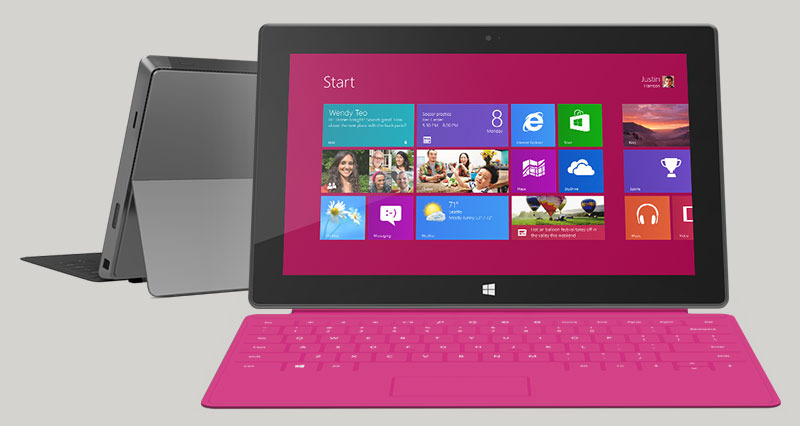
The Surface RT is Microsoft’s bid for the tablet space currently owned by Apple’s iPad. Sure, Android tablets may cost a little less and aspire to the same market, but none have been able to come close to the iPad in terms of ease-of-use and user adoption.
While the aspect ratio is more widescreen than Apple’s, the 10.6-inch display seems a little more usable than the slightly unbalanced, 11.6-inch displays that dominate the Windows 8 tablet market. Windows RT is fast and responsive on the ARM-based, Nvidia Tegra processor. The Surface’s 1366-by-768 resolution doesn’t match the beauty of Apple’s iPad Retina display, but most users probably won’t notice.
In the Surface RT, Microsoft has introduced some clever touches, such as a built-in kickstand and the optional Type Cover, which integrates a flat, tactile-free, but extremely thin keyboard. The company also bundles a reduced version of Microsoft Office, but using those Office apps kicks you into desktop mode, which feels very weird on a device that’s really meant to be a pure tablet. On the Surface RT, the Windows Start Screen is the native interface, and seems capable and usable.